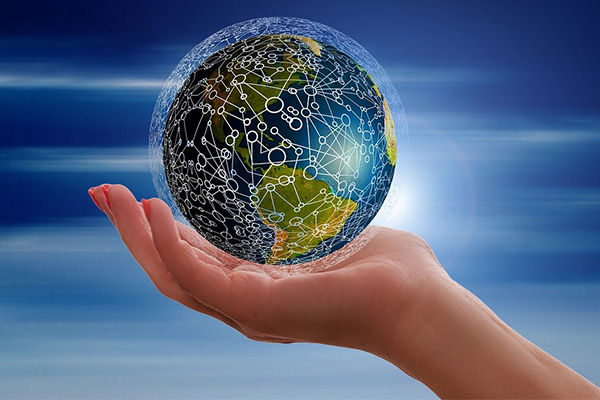Send an email, watch his social networks or watch streaming videos … all these acts of our daily life have a beautiful and impact on our planet .
Since the Covid-19 pandemic , the acceleration of digitization has never been so important. Teleworking, dematerialization of documents and sending emails in large numbers … our new habits are not without environmental consequences .
Why and how to limit them? This is what we will explain to you.
Understanding digital pollution
Digital pollution refers to all forms of pollution caused by new technologies : greenhouse gas emissions, chemical pollution, erosion of biodiversity, production of electronic waste.
All the activities that revolve around digital ask for energy resources . We consume more and more by digital :
- Material manufacturing l: around 35% of the total expenditure on digital energies
- Energy for their use daily: around 30%
- How our networks work : 20%
- Resources for powering servers : 15% of energies.

According to our source , the top 4 everyday actions that have the most impact are:
- Watch videos : 80% of web data is linked to videos
- Social networks : more than 5% of global traffic is linked to our use of social networks. To give you an example, Facebook at the end of 2020 had 2.8 billion active users worldwide. If we have to put a figure on the energy expenditure linked to this site it would be 645,000 Paris-New York flights !!
- Our mailboxes : on average, an email browses digitally 15,000km to arrive in your correspondent’s box . The more attachments it is loaded with, the larger the carbon footprint. Per day, 293 billion emails are sent, we’ll let you do the math! But the worst part is that 75% of emails are spam and will not be opened.
- Search engines : 1 internet search of 1 minute from a fixed computer consumes 100 watts . At Google alone, 3.3 billion searches are performed every day. 1 year of internet research = 1 year of electricity consumption for a country like Norway.
Basically, digital represents 4% of greenhouse gas emissions in the world . This equates to 1.5X more than air travel.
7 to 10% of the world’s electricity would be consumed by the Internet and only 5% of digital devices are currently recycled.
With a lifespan of just over 2 years, our cell phones have almost become disposables . It’s boring, because the manufacture of a smartphone represents 80% of its environmental footprint . Indeed, this small device is a big consumer of non-renewable natural resources …
And examples like these are numerous in our daily life.
Become aware of the cost of our clicks
At home and at the office, digital tools are one of the main sources of power consumption. You must therefore remember to turn them off when you are no longer using them. In addition, on some equipment, you can also select the “energy saving” option.
Several web giants, which are among the most large consumers of energy in the digital sector , are now turning to green and eco-responsible energies .
We are also seeing progress within companies: reduction of paper printing, internal communication to avoid emails, creation of an eco website, rental of computer equipment, etc.
So because the Internet is a great medium of exchange and an inexhaustible source of information: let’s take care of adapt our consumption to make this essential tool of our daily life, more eco-friendly .
Let’s watch our videos in low resolution, reduce the quality of photos shared on social networks, regularly clean up unnecessary information stored in the cloud or even delete our sent emails … these are some of the small gestures that reduce the ecological impact of digital technology .
To know : 4G consumes 5 to 25 times more than Wireless . Let’s remember to cut our mobile network as soon as it is possible to switch to Wifi.
(The above figures vary according to the studies, some are regularly questioned or even impossible to verify.)

The positive impact of digital
In Europe, an office worker consumes on average 2,500 sheets of paper per year . The massive use of this paper as well as the ink for printing has very negative effects on the environment. The advantages of digital on this point are undeniable …
Digital has a significant impact on resources of our planet , but a good one use of digital would allow us to counterbalance this impact in many areas.
Dematerialization of documents in business: a gesture that remains ecological . 1/5 of greenhouse gas emissions would be due to the destruction of our forests.
It is good to know that the digital invoice would be less damaging overall if it is never printed and if it lasts less than thirty minutes online.
Early 2020, Microsoft announced wanting to be carbon negative by 2030 thanks to a foundation financed by an internal tax. Energy savings for chips, more efficient cooling of data centers: the sector is innovating to contain its impact.
The manufacturers such as Dell, HP, Apple, etc. Datacenter pay more and more attention to recycling of computer equipment . They tend to become energetically independent and minimize their carbon footprint. Of the’eco-design for recycling of their products, including specific applications for reduce energy consumption , manufacturers of computer equipment are not short of ideas to offer companies models more eco-friendly .
In an attempt to fight against digital pollution , a discipline appeared in the early 2000s: sustainable computing .
“It seeks to reduce as much as possible the impact of IT on the environment”, explains Romain Willmann, speaker for EMLYON Business School.
By launching a laptop PC with a bamboo-based shell, Asus didn’t just pull off a marketing stunt. This idea enabled the manufacturer to reduce the volume of plastics required for its design by 20%.
In the same spirit, Sony is currently testing with the general public a computer whose shell is manufactured from recycled plastic CDs and DVDs.
do not forget that digital also allows the design of systems improving the management of energy, resources and transport.
On a small scale and to take an example of our daily life, it will be less expensive for the planet to be able to check the opening hours of the business in which you want to go, than to make the trip with your vehicle to find yourself in front of a door. closed.
Making digital more environmentally friendly
Did you think you were well informed about what is polluting around you? Many people have not yet realized the impact of their digital consumption on the world.
Yes digital is the future , and no we will not be able to do without it. So let’s adopt these responsible actions in our life to limit the digital consumption .
As seen above, digital technology is believed to be responsible for 4% of greenhouse gas emissions and could post a rate of 8% by 2025. However, it is clear that it also fulfills an essential role, as was shown during confinement in the face of the Covid-19 pandemic.
Let us remember that if we make a collective effort to tend towards eco-responsible digital practices , we could transforming digital technology into an ally of choice in our fight against global warming .


